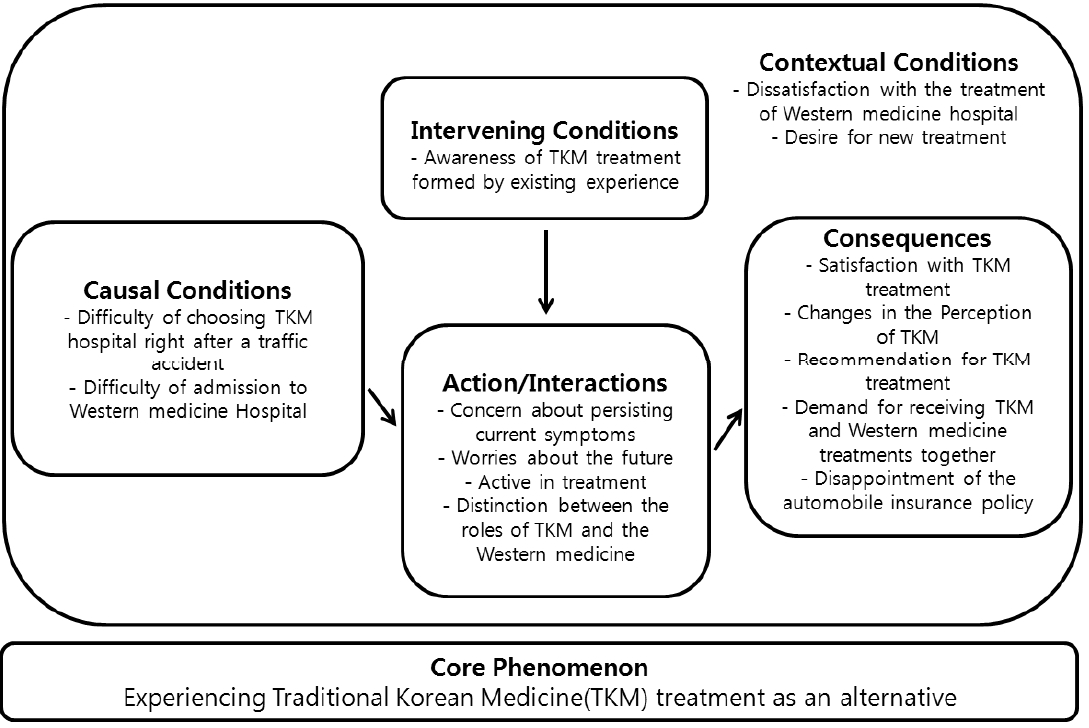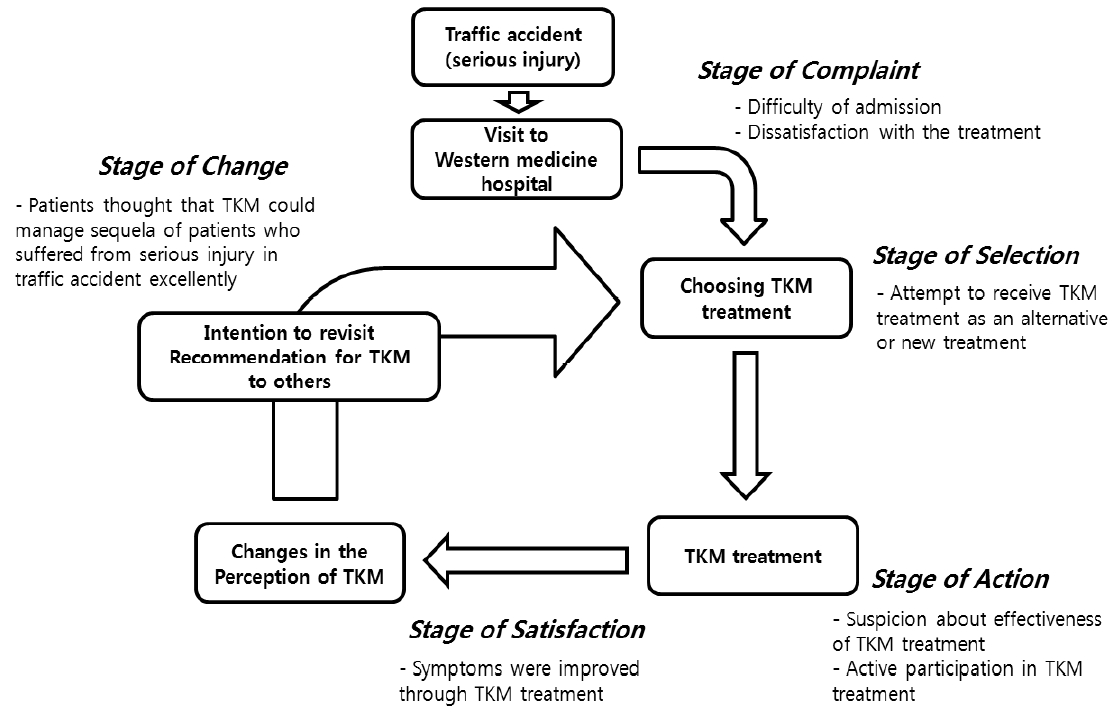A Qualitative Research on the Treatment Experiences of Patients with Serious Injury in Traffic Accidents Treated with Traditional Korean Medicine
Article information
Abstract
Objectives
The purpose of this study is to understand the experience of traffic accident patients with serious injury treated with Traditional Korean Medicine (TKM).
Methods
This study was conducted on the basis of grounded theory. We recruited 10 participants who had been hospitalized in Dongguk University Bundang Oriental Hospital after traffic accident. Raw data was collected by in-depth interview, and analyzed by using constant comparison. The coding(open-axial-selective) was performed in order to create paradigm and theoretical model, which can explain main theme of this study.
Results
Core phenomenon of this study was ‘Experiencing TKM treatment as an alternative’ and core category was ‘Searching for the answer to the management of traffic accident sequela through TKM treatment’
Conclusions
For patients with serious injury, ‘Experiencing TKM treatment as an alternative’ has meaning as the following: First, The absence of accurate radiography and surgical management makes it hard for patients to choose Korean medicine hospital immediately after traffic accident. Second, Effectiveness of TKM treatment should be evaluated in the long term. Third, TKM treatment is superior to Western medicine treatment in managing long-term patients who suffered from serious injury involved in traffic accident. Finally, Cooperative service of the Western medicine and TKM will provide more satisfactory medical care for traffic accident patients.

Paradigm of the experience for traffic accident patients with serious injury treated with Traditional Korean Medicine(TKM)

Theoretical model of ‘Searching for the answer to the management of traffic accident sequela through Traditional Korean Medicine(TKM) treatment
Acknowledgements
This study was supported by the Association of Korean Medicine (AKOM).

